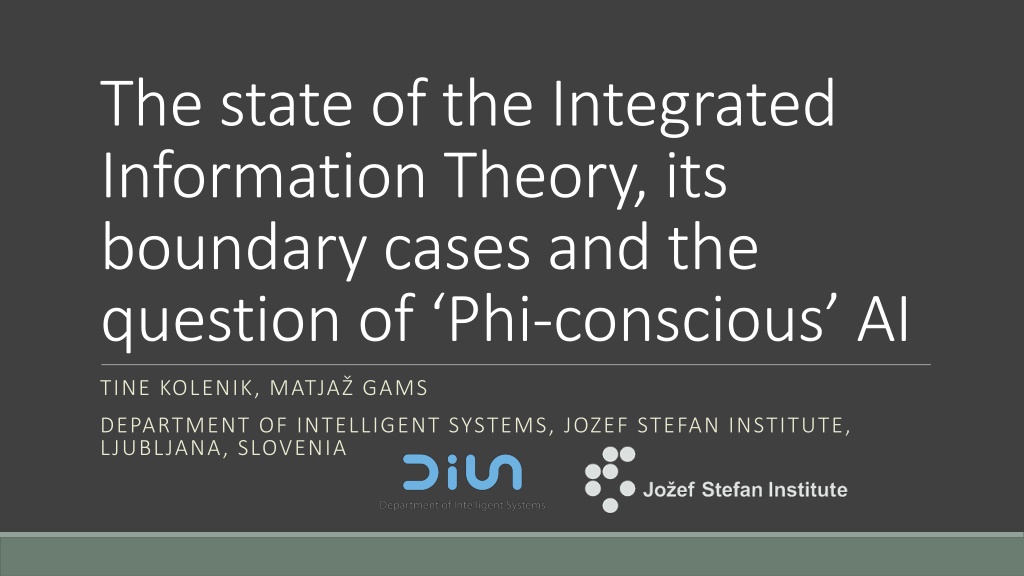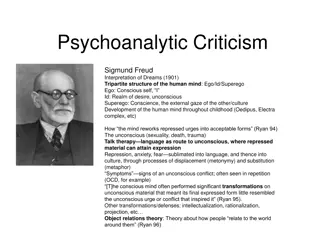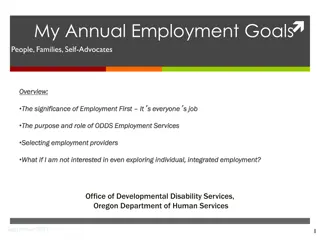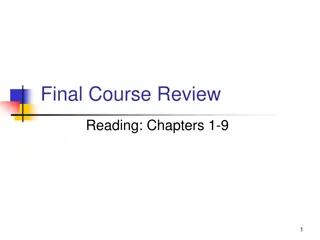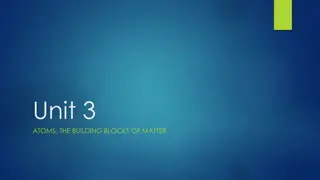Exploring the Integrated Information Theory and Conscious AI
Delve into the Integrated Information Theory (IIT) and its impact on understanding consciousness, including its correlation with artificial intelligence. The IIT posits key axioms and postulates to define consciousness, exploring boundary cases and implications for AI development.
Download Presentation

Please find below an Image/Link to download the presentation.
The content on the website is provided AS IS for your information and personal use only. It may not be sold, licensed, or shared on other websites without obtaining consent from the author. Download presentation by click this link. If you encounter any issues during the download, it is possible that the publisher has removed the file from their server.
E N D
Presentation Transcript
The state of the Integrated Information Theory, its boundary cases and the question of Phi-conscious AI TINE KOLENIK, MATJA GAMS DEPARTMENT OF INTELLIGENT SYSTEMS, JOZEF STEFAN INSTITUTE, LJUBLJANA, SLOVENIA
OUTLINE Introduction State of the Integrated Information Theory (IIT) Outline Tools Experimental work Problems Integrated Information Theory and artificial intelligence Hypothesis on AI scoring better on IIT consciousness Analysis Conclusions & future work
INTRODUCTION The most well received recent theories: Global Workspace Theory the Multiple Drafts Model predictive coding approaches quantum theories of consciousness Integrated Information Theory (Giulio Tononi) described as the most formally sound (useful for AI, scientifically viable)
STATE OF THE IIT Phi ( ) concept of integrated information, closely correlated with consciousness level Integrated information: information system has about itself and how much this information depends on the interconnectedness of the system s parts Phi can be calculated for any given system, and many times will be positive (panpsychism), e.g. light switch Tononi bypasses the hard question of consciousness with IIT Axiom 1 IIT tries to answer questions like: Why does cerebral cortex give rise to consciousness, but not cerebellum (4x more neurons)? What is important for consciousness in terms of various boundary cases: patients and infants, animals, machines
STATE OF THE IIT IIT proposes what consciousness is with the following necessary conditions for them to exist (five Axioms and Postulates): 1.Intrinsic experience: Axiom: Consciousness is real, and it is real from its own perspective. Postulate: System must have cause-effect power upon itself. 2.Composition: Axiom: Consciousness is composed of phenomenological distinctions, which exist within it. Postulate: System must be composed of elements that have cause-effect power upon the system. 3.Information: Axiom: Consciousness and each experience is specific, differing from other possible experiences. Postulate: System must possess cause-effect sets that differ from each other in their space of possibilities. 4.Integration: Axiom: Consciousness is unified and experience is irreducible to a set of its phenomenological distinctions taken apart. Postulate: System must specify its cause-effect structure as to be unified, irreducible to mere sum of its parts ( system> sum of parts). 5.Exclusion: Axiom: Consciousness and experiences are definite and are the way they are, nothing else. Postulate: System must specify its cause-effect structure to be definite, always over a single set of elements and maximally irreducible ( system> any given sub-system).
STATE OF THE IIT: TOOLS & PROBLEMS PyPhi: Python library for calculating Phi Phi cannot be calculated with our current computational technologies Algorithm s running times = O(n53n) Experiment on 4 3.1GHz CPU cores: # of nodes in system Running time 3 5 7 ~8 seconds ~2.5 minutes ~24 hours
IIT AND AI HYPOTHESIS: IF INTELLIGENCE(KR+NN) > INTELLIGENCE(KR) PHI(KR+NN) > PHI (KR), PHI (NN)? IF INTELLIGENCE(KR+NN) > INTELLIGENCE(NN)
IIT AND AI KR+NN (KR NN) AI type KNOWLEDGE REPRESENTATION NEURAL NETWORKS IIT Intrinsic experience TRUE TRUE TRUE Composition TRUE FALSE TRUE Information TRUE FALSE TRUE Integration FALSE TRUE TRUE Exclusion FALSE FALSE FALSE
IIT AND AI Tononi: IIT should be judged according to how it explains the empirical data about consciousness AI inherently worse off as there is not empirical data on AI consciousness Tononi presupposes consciousness and acts accordingly that neurological data on the brain is in fact empirical data about consciousness, without calculating to find out whether this is true Can one presuppose it in robots and reverse engineer AI-Phi from there?
CONCLUSIONS AND FUTURE WORK Contribution of this work: speculation on whether AI is Phi-conscious or not We speculate about consciousness on various types of AI and hypothesize that combining different types brings us closer to Phi-conscious AI CONFIRMED Future work: Using AI methods as heuristics to shorten the time for calculating Phi Confirming our hypothesis by calculating Phi Calculating Phi for various machine and AI setups (e.g. two recurrently connected Turing machines Phi vs two individual Turing machines Phi)
REFERENCES [1] Hawkins, S. L. 2011. William James, Gustav Fechner, and Early Psychophysics. Front. Physiol. 2, 68 (2011). DOI= 10.3389/fphys.2011.00068. [2] Chalmers, D. 1996. The Conscious Mind: In Search of a Fundamental Theory. Oxford University Press, Oxford. [3] Robinson, R. 2009. Exploring the "Global Workspace" of Consciousness. PLoS Biol. 7, 3 (2009), e1000066. DOI= 10.1371/journal.pbio.1000066. [4] Dennett, D. C. 1991. Consciousness Explained. Little, Brown & Co, Boston, MA. [5] Clark, A. 2013. Whatever next? Predictive brains, situated agents, and the future of cognitive science. Behav. Brain Sci. 36 (2013), 181-204. DOI= 10.1017/S0140525X12000477. [6] Atmanspacher, H. 2019. Quantum Approaches to Consciousness. The Stanford Encyclopedia of Philosophy, (2019). [7] Tononi, G., Boly, M., Massimini, M., and Koch, C. 2016. Integrated information theory: from consciousness to its physical substrate. Nat. Rev. Neurosci. 17, 7 (2016), 450-461. DOI= 10.1038/nrn.2016.44. [8] Gennaro, R. J. 2018. Consciousness. Springer, Cham. [9] Tononi, G. 2008. Consciousness as Integrated Information: a Provisional Manifesto. The Biological Bulletin. 215, 3 (2008), 216-242. DOI= 10.2307/25470707. [10] Alter, T. and Nagasawa, Y. 2015. Consciousness in the Physical World: Perspectives on Russellian Monism. Oxford University Press, Oxford. [11] Tononi, G. and Koch, C. 2015. Consciousness: here, there and everywhere? Phil. Trans. R. Soc. B. 370 (2015). DOI= 10.1098/rstb.2014.0167. [12] Gams, M. 2015. Kochove meritve zavesti. In Cognitive science: proceedings of the 18th International Multiconference Information Society IS 2015 (Ljubljana, Slovenia, October 8-9, 2015). Jo ef Stefan Institute, 11-14. [13] Oizumi, M., Albantakis, L, and Tononi, G. 2014. From the Phenomenology to the Mechanisms of Consciousness: Integrated Information Theory 3.0. PLoS Comput. Biol. 10, 5 (2014), e1003588. DOI= 10.1371/journal.pcbi.1003588. [14] Dehaene, S. 2015. Consciousness and the Brain. Viking, New York. [15] Bohannon, J. 2018. A computer program just ranked the most influential brain scientists of the modern era. Retrieved September 11, 2019, from https://www.sciencemag.org/news/2016/11/computer-program-just-ranked-most-influential-brain-scientists-modern-era. [16] Bayne, T. 2018. On the axiomatic foundations of the integrated information theory of consciousness. Neuroscience of Consciousness, 2018, 1 (2018), niy007. DOI= 10.1093/nc/niy007. [17] Mayner, W. G. P., Marshall, W., Albantakis, L, Findlay, G., Marchman, R., and Tononi, G. 2018. PyPhi: A toolbox for integrated information theory. PLoS Comput. Biol. 14, 7 (2018), e1006343. DOI= 10.1371/journal.pcbi.1006343. [18] Robson, D. 2019. Are we close to solving the puzzle of consciousness? Retrieved September 11, 2019, from http://www.bbc.com/future/story/20190326-are-we-close-to-solving-the- puzzle-of-consciousness. [19] Marr, D. 2010. Vision: A Computational Investigation into the Human Representation and Processing of Visual Information. The MIT Press, Cambridge, MA. [20] Shoham, Y. Award for Research Excellence presentation. Invited Lecture. 2019 International Joint Conference on Artificial Intelligence. [21] Gams, M. 2001. Weak intelligence: through the principle and paradox of multiple knowledge. Nova Science, Hauppauge, NY.
